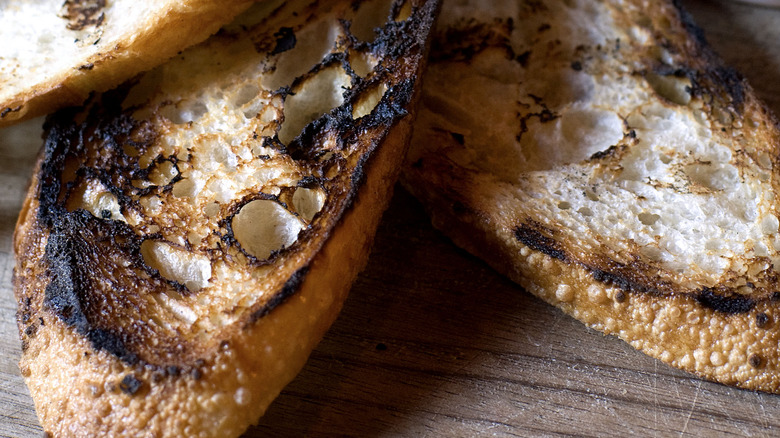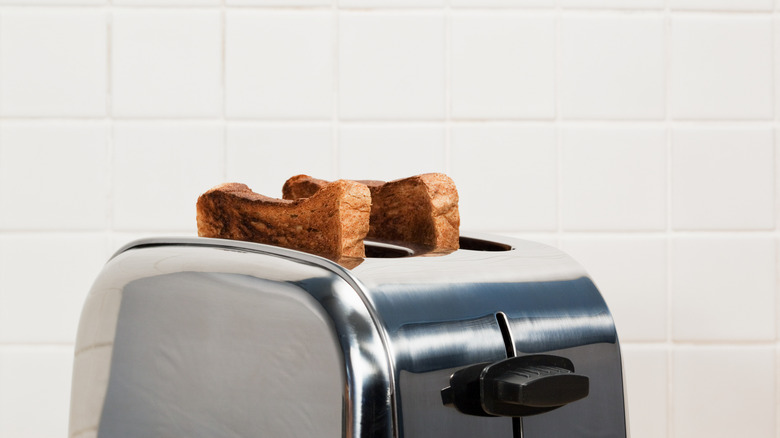Why Toast Tastes Better At A Restaurant Than At Home
No matter how adventurous, refined, or elevated your palate might be, there are some things you just can't top in terms of the comfort and satisfaction they provide. Enter, toast. Nothing tops a crispy golden-brown slice. What would a sick day or classic breakfast be without it, and what would we slather avocado on? When it comes to making the best possible toast, it's as simple and as hard to mess up as it gets — even sworn non-cooks can master toast. But still, there's science and technique that separates the toast you're probably making at home from the perfect slices you'd get at a diner or your favorite brunch spot. Luckily, their tricks are possible to replicate at home.
You might think that to really do it right, you would have to bake your own from-scratch loaf or slather on butter made from milk from local cows. While this certainly wouldn't hurt, the real make-or-break factor is the cooking method and the butter you use. Whether you're using homemade, store-bought, or even plant-based butter, don't be shy with it. A generous layer is what's giving the restaurant variety that savory, crunchy-but-moist quality. The way you toast your bread is also a game-changer. Instead of popping your bread in the toaster, try turning on the stove and browning the bread in a pan for restaurant-worthy quality. Both your cooking method and the amount of butter you use help create the perfectly rich, crispy, never-dry slice.
The type of heat and the amount of butter matter
While almost any bread you choose can make good toast, the type matters, of course, as does the thickness. Go for a heftier slice to mimic a restaurant offering. Your go-to heating method is likely to pop bread into a toaster, but if restaurant-worthy toast is what you're after, stick to the stovetop instead.
J. Kenji López-Alt, New York Times food columnist and author of "The Food Lab," says that the cooking method, timing, and heat all matter. He told My Recipes, "For the very best toast, do it the way they do it in the very best diners: on a griddle or pan, in butter." While a toaster uses infrared radiation, the stovetop method uses basic conduction. According to López-Alt, this is why the stovetop results in more even cooking and browning, and leaves you with a piece of toast that stays more moist and chewy, instead of crouton-like. The other big perk of this method is that you can see exactly when the toast is done to your liking, which typically means golden brown but not charred and with a bit of chewy give in the center. Then, it's ready to be loaded up with butter or jam or served as a vehicle for eggs, avocado, or whatever toppings your heart desires.

